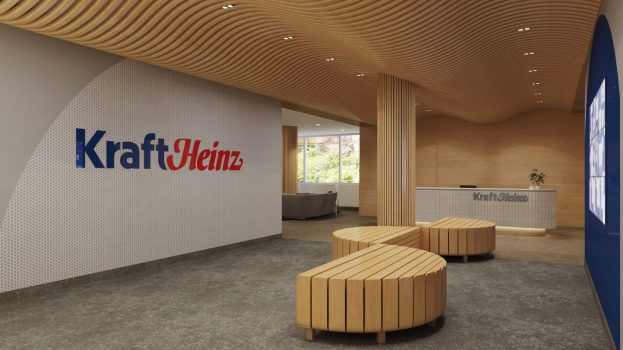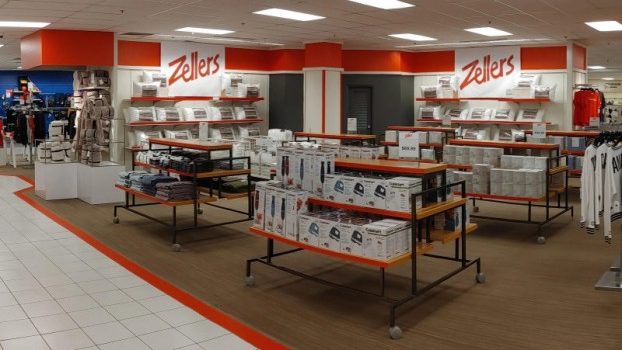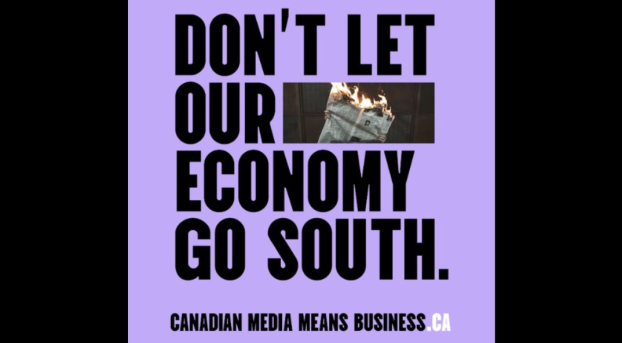This story originally appeared in the May/June 2020 issue of strategy.
In the weeks that followed Canada’s first confirmed case of COVID-19 on Jan. 27, the virus that swept the globe, overwhelming health-care systems and decimating economies, began to transform consumer behaviour.
Shelves emptied as shoppers rushed to stockpile essentials such as canned goods, toilet paper, disinfectant wipes and hand sanitizer. A new reality took hold as authorities suspended most, and then all, gatherings: conferences, sports leagues, even the Olympics. Travel restrictions escalated, grounding planes and upending vacation plans. As families waited days for grocery deliveries, others nervously lined storefronts in demarcated single files. Millions of jobs vanished in a matter of weeks, while non-essential workers were ordered to stay home. The country braced for a vicious cycle as consumer spending fell and businesses closed, necessitating more layoffs.
To consumers, the trauma of a global health crisis is akin to having your country suddenly transformed into a warzone, says Johanna Faigelman, a cultural anthropologist and CEO of Human Branding, in April. “The boundaries and constraints of what my world is and what I’m entitled to and what I need have all been drastically reduced, as well as reprioritized and reevaluated.”
Around the world, the pandemic has resulted in significant, short-term shifts in consumer spending. Countless reports have attempted to capture consumer attitudes at specific moments of the crisis, revealing developing trends but failing to predict the future with any degree of accuracy. Unclear is which trends will subside once COVID-19 is under control, and which will have permanently imprinted themselves on Canadians’ psyche.
Past upheavals, from the global influenza pandemic of 1918 to the 2008 financial crisis, offer important clues. Then again, in scope and impact, few compare to COVID-19, which has imperiled everyone from celebrities and politicians to grandparents and retail workers.
The realities of the digital age and the sheer volume of information – and misinformation – available at consumers’ fingertips have heightened anxieties, shaping behaviour in unexpected ways. “No society has been at this stage in its technological and information sharing development ever, with this kind of crisis at our hands,” says Faigelman. “We all know too much about it at all times. We’re all sitting back in our homes, thinking about it twenty-four-seven.”
At the time of writing, Canada was in the fifth of six consumer behaviour thresholds identified by Nielsen, a phase known as “restricted living.” Only China had entered stage six – a new normal – characterized by a gradual return of daily routines, renewed health practices, and changes in shopping behaviour. But with governments warning of periodic outbreaks over the next year and beyond, the future has never felt more uncertain.
Almost everything has been predicted by one pundit or another: from the collapse of consumerism to a v-shaped return to business as usual. Agreeing with other experts that spoke with strategy, Faigelman believes we’re experiencing a temporary acceleration of societal trends that were “already percolating in all our minds.” Hyper-localization, DIY culture, health and wellness, online shopping and remote working will accelerate, though perhaps only modestly when taking the long view.
A return to basics
In the midst of a crisis, humans resort to basics. Consider Maslow’s hierarchy of needs, first posited in 1943, which dictates people must fulfill their fundamental needs, such as food and safety, before forging into more grandiose pursuits. Our survival instincts kick in; reusable mugs are shelved for the reassurance of single-use cups.
 The once-boundless world contracts, becoming the size of a person’s neighbourhood or condo, says Faigelman. Basic consumerist assumptions, such as the ubiquitous availability of toilet paper, are swept away. In their place, a desire to be self-sufficient takes root. Back to baking, sewing, DIY. No more relying on relatives, maintenance workers, Uber drivers. “You suddenly have to do things for yourself that you thought you’d never have to think about again.”
The once-boundless world contracts, becoming the size of a person’s neighbourhood or condo, says Faigelman. Basic consumerist assumptions, such as the ubiquitous availability of toilet paper, are swept away. In their place, a desire to be self-sufficient takes root. Back to baking, sewing, DIY. No more relying on relatives, maintenance workers, Uber drivers. “You suddenly have to do things for yourself that you thought you’d never have to think about again.”
This shift is felt most strongly among the categories that intersect with the necessities of life, namely food and beverage and health and wellness.
Early on in the crisis, panicked consumers frantically purchased shelf-stable products that would keep their families nourished: soups, oats, pulses and proteins, dried beans and legumes, pastas, frozen fruit, alternative dairy products and powdered milk. Two weeks into the state of emergency, 60% of consumers reported suddenly buying more foods and beverages, according to Kathy Perrotta, VP market strategy and understanding at Ipsos. She says even millennials, defying demographic trends, were buying more non-perishable and frozen foods.
In states of emergency, foods that hold symbolic and emotional power tend to undergo a resurgence, according to Faigelman. People cling to higher-fat, staple foods that help them feel fulfilled. Some research suggests consumers, craving comfort, swap the calories typically consumed in QSRs and cafes with small indulgences at home.
“There’s nothing that makes you feel better when you’re freaking out and suffering than a chocolate chip cookie or a warm loaf of bread or a nice bowl of pasta,” says Faigelman. “The foods that give us the most pleasure, that are the most sustaining… those are the foods that we’re currently seeking and that are going to experience a resurgence in popularity and interest even after the crisis is over.”

This trend towards higher-carb diets may suggest consumers are being less mindful of their health, but that’s not the case, notes Perrotta. Not only does nutrition become a fundamental consideration during difficult times, but consumers increasingly consider the energy-fueling, stress-reducing and immune-boosting wellness benefits of their food and beverage purchases.
During the 2008 financial crisis, adults in the U.S. (where the crisis was most severe) showed greater concern for nutrition while shopping for groceries, according to the USDA. By 2010, more adults were likely to rate their own diet as excellent, very good or good, compared to before the crisis began.
“A lot of people have said to me, ‘Yeah, but economically, if people are in a more compromised economic state, they’re going to go for value and they’re not going to focus on their health,’” says Perrotta. “I don’t agree. It’s going to be some combination of both.”
In addition to cooking more at home, consumers will continue seeking products that are locally sourced – a factor often tied to perceptions of quality and wellness, according to Perrotta. Over the last year, 17% of Canadians said they consumed more local food and beverage products, up 4% from 2017. The outbreak is likely going to accelerate that trend, she says, as local products meet additional consumer needs – such as comfort, quality, stress relief – and make them feel good about their choices.
In March, research by IMI International examining the impact of COVID-19 on consumer choices showed 58% of Canadians were much more likely to purchase made-in-Canada products in the coming months, versus those made in the U.S. (28%) or in China (8%). Twenty-nine percent were more likely to buy from a Canadian farm (and 10% from a local farm), with 21% saying the same about any product made in their city.
A temporary cognitive shift
With Canadians finding themselves confined to their homes, many experts and reports predict COVID-19 will accelerate digital and tech adoption.
“All age ranges will be impacted by the flood of virtual experiences,” predicts agency Bensimon Byrne in a report examining the 18 months following the pandemic. “Though likely to be initiated by tech-savvy Gen Zers, soon all ages will find a virtual experience that aligns with their interests, no matter how obscure.”
As Canadians went into self-isolation, many maintained their relationships through digital means. In April, a report by Edelman’s Trust Barometer found 84% of people wanted companies to help them stay emotionally connected during the pandemic. The same percentage wanted brands to help foster community and social interactions. Gyms began offering free at-home group fitness classes, dating app Bumble launched “virtual dating” features, and beer brands hosted at-home, virtual happy hours with friends and family.
For convenience and safety, consumers turned to at-home grocery delivery and click-and-collect to allay the fears of venturing into stores – research by Dalhousie University found that 47% of people were avoiding grocery stores as of March 23, up from 18% on March 3 – resulting in a surge in grocery ecommerce.
By the end of March, orders placed through Loblaw’s PC Express had more than doubled, Walmart was receiving four-times the amount of online orders, and demand had jumped 150% at Instacart, according to the Globe and Mail. All three companies went on hiring sprees to meet demand. Meanwhile, smaller local retailers, including Toronto’s Fresh City Farms and Fresh from the Farm, either halted grocery delivery or stopped accepting new customers due to overwhelming demand.
Older, more vulnerable people are among those shopping online, many for the first time, which could signal potential for growth once the pandemic is under control. Some experts predict convenience will keep customers coming back. In China, the online grocery market is expected to surge by 63% this year, more than double the 29% growth seen in 2019, according to data from iiMedia Research released in March.
But, Deloitte’s Duncan Stewart points out that long-term adoption will depend on user experience, which, due to the sheer volume of orders, has not been seamless. Customers face out-of-stock products, long wait times, higher prices (due to delivery fees and fewer promotions), and perishable foods they feel are less fresh than what’s available in store.
Stewart, who is the director of research for Technology, Media and Telecommunications at Deloitte, searched for a historical precedent to better understand the impacts of COVID-19 on tech adoption. He found one in the global influenza pandemic of 1918-1920, which infected an estimated 500 million people worldwide, killing at least 50 million of them.
The world’s response to that health crisis was similar to the current one, including mandated closures and restricted travel. Several technologies, including telephones, stoves, electricity and cars, were early in their adoption cycles, comparable to mobile devices and streaming services today.
 Examining growth trends across a number of sectors during and after the 1918 crisis, Stewart believes it led to “few or no significant permanent changes in consumer behaviour.” In almost every case, growth trends returned to their pre-pandemic trajectories within a year or two.
Examining growth trends across a number of sectors during and after the 1918 crisis, Stewart believes it led to “few or no significant permanent changes in consumer behaviour.” In almost every case, growth trends returned to their pre-pandemic trajectories within a year or two.
Automobile, electricity and telephone adoption all dropped very slightly over the course of the pandemic, returning to their previous growth trends soon afterwards. In short, Stewart says, the health crisis appears to have had little effect on consumers’ desire to adopt potentially life-saving technologies.
Having a telephone, for example, meant being able to connect with others and complete tasks from the safety of home. “‘Hey, honey, let’s get a phone, because then we will be safer when the next terrible virus comes around.’ Doesn’t that make sense to you? It didn’t happen. It didn’t even come close to happening.”
Fast-forward to COVID-19 and sales of desktops, laptops and related tech have surged as millions of people work from home. By the end of March, video streaming was up 20% to 70% across platforms from a month prior, according to one estimate. But within a year or two, Stewart expects their previous pre-pandemic growth trends to resume.
These categories tend to be “propelled by giant trends of consumer behaviour… and demographics,” he says. “A little bit of a cross-breeze doesn’t really change them much… Even a pandemic doesn’t do it.”
A redefined home (and workplace)
Strict travel restrictions and work-from-home policies have inspired consumers to reconsider their physical environments, says Faigelman.
During sustained periods of staying in, the desire to improve our surroundings comes into sharp focus, overriding other consumer needs.
 “I may have 100 pairs of shoes in my closet. That’s not actually making me feel better right now,” says Faigelman. “What would make me feel better would be a really cozy blanket that I could lie on my couch with.”
“I may have 100 pairs of shoes in my closet. That’s not actually making me feel better right now,” says Faigelman. “What would make me feel better would be a really cozy blanket that I could lie on my couch with.”
In times of crisis, the home takes on even greater meaning, becoming our primary source of safety, comfort and shared family experiences, she says. Over the short- and long-term, brands should expect a resurgence of “anything to do with decorating or cocooning or making things more comfortable or suitable in your home.”
A refocus on the home, and the creature comforts found within, impacts entire categories, from hygiene and beauty to clothing and fitness. As China grappled with the outbreak, sales of yoga mats, pajamas and kitchen accessories experienced a boost, while discretionary spending on clothes, cosmetics, skincare and furniture dipped, according to S&P Global Market Intelligence.
At the height of the Canadian crisis, fashion brands tapped into consumers’ desire for comfy, work-appropriate attire. Aritzia used quarantine-worthy TV shows to promote “fave styles inspired by your watch list” like sweatshirts that don’t need “laundering” (Ozark); Lululemon curated WFH-friendly yoga pants and tees in its marketing; while intimates brand Knix invited women to “work from home like a boss” in a new line of loungewear essentials.
Meanwhile, on social, Canadians shared their decisions to forgo deodorant and showering. Google searches for lipsticks, mascaras, eyeliners and concealers dropped between 30% and 45% in March, according to Reprise data, while aspirational searches for beauty looks and ideas spiked by a respective 121% and 28%. Consumers showed interest in homemade dry shampoo, lip balm and deodorant, as DIY skincare solutions on Pinterest jumped 102%.
Whether these trends persist will depend on the future of work in the post-pandemic era. It’s likely consumers will resume their social lives, sparking a resurgence in some of the categories hardest hit by COVID-19, such as restaurants and live entertainment. On the other hand, more widespread flexible work-from-home policies post-COVID could precipitate lasting change in a number of areas, including fashion, food and beauty.
Many working professionals structure their lives around their morning commutes and in downtown cores. If remote working becomes the norm, people would likely cook more (instead of eating out), dress differently (paying less attention to their wardrobe) and rethink their beauty routines (taking breaks from products). They may not need cars, or daily access to transit. They don’t necessarily order takeout for lunch or visit the mall on their breaks. In short, people who work from home live fundamentally different lives from those who don’t.
As of 2017, 11% of Canadian business people reported working remotely all week, according to Regus Canada, while 39% said they mostly work from home. If the number of full-time remote workers grows to half the working population or more, Stewart believes the world will be a different place. On the other hand, “if it goes back to more-or-less what we did before, my prediction is that things will go back to as they were before.”
There are reasons to doubt an epoch-defining shift will take place in the wake of COVID-19. To an extent, government-dictated work-from-home policies have revealed their feasibility during normal times. However, long-term office leases and other work-related costs will likely prevent employers from implementing them, notes Stewart. More importantly, the experts suggest consumers will crave the human interaction workplaces provide. “Human contact is what this entire world is built upon,” says Faigelman. “We will seek that out again, even in the workplace.”
Canadians will likely emerge from COVID-19 having experienced “unconscious epiphanies,” but they’ll be rooted in already-existing societal shifts, says Faigelman. She believes people will continue to question the purpose of accumulating material goods, or the necessity of leisure and business travel and its impact on the health of the planet.
“I don’t believe the lessons being learned now will go away fast,” she says, “not because we’re such great people and we’re all so enlightened, but because we’ve been forced into it and they were already tenets of societal change.”
Consumer Trends to Watch
While no one has a crystal ball to predict a post-pandemic world, many have sure tried. Here are a few trends that may (or may not) define a new normal.
Socially distanced travel: Toronto’s Blackjet believes remote destinations with clean air and big open space could attain luxury status as people avoid crowded cities and hotels. New opportunities may emerge in RVing, while consumers push the travel sector to rethink space and air quality on planes and trains. Whereas the 9/11 attacks changed air travel safety procedures, agency Bensimon Byrne says COVID-19 may instigate a “re-evaluation of global sanitation standards and procedures.”
Sterilized society and at-home healthcare: Consumers will seek out products to boost their immune systems, as well as personal hygiene and household care products, states U.K-based research firm FMCG Gurus. To remain healthy and fit at home, Nielsen found that Chinese consumers have “embarked on a buying spree of smart health products,” and are purchasing or plan to buy air purifiers, water purifiers and smart fitness bracelets at rates of 90%, 93% and 77%. In addition to new smart-health solutions, Bensimon Byrne says remote care and treatment tools may become commonplace.
Luxury reimagined: Unable to indulge in global travel and urban experiences due to social distancing and border closures, high-income earners may look for new ways to signal their status, says Bensimon Byrne. Many may spend money on big-ticket purchases or plan “lavish staycations in their own cities and provinces.” Blackjet projects the impact may be greater still: flashy goods could fall out of favour as disposable income shrinks and as there’s an “unsavoury perception of extreme wealth in a time when most are struggling.”
Renewed privacy concerns: In countries such as China, South Korea and even Canada, governments and agencies have used GPS data to track movements and measure how well citizens are respecting social distancing. As a result, WGSN predicts consumer privacy concerns may grow: “Expect increased levels of consumer interrogation into the data that is being held on them and how it is being used.”



























